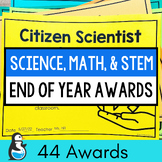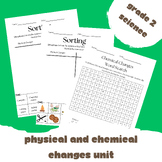79 results
Chemistry lectures for staff
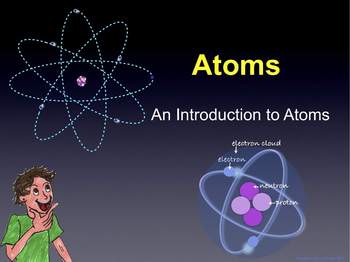
The atom - what are atoms? Slide Presentation.
This slide set entitled “Atoms: An Introduction to Atoms”, contains 31 PowerPoint slides with teaching notes on each slide (in the notes section).
A separate free 25 page PDF handout, free quiz, and teachers answers to the quiz are also available for this presentation.
The presentation covers a basic introduction to atoms and includes the following:
• What is the relationship between matter and atoms?
• What is the structure of atoms?
• What is responsible for the atom's mass?
• What is r
Subjects:
Grades:
3rd - 6th, Staff
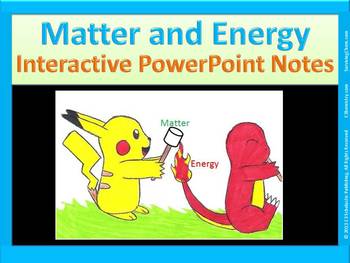
Matter and Energy: Easy-to-Copy Interactive PowerPoint notes for HS chemistry
This 100-slide PowerPoint slide show is for my Matter and Energy topic.The presentation covers every concept found in all of my other Matter and Energy products. The slide presentation covers Types of Matter, Phases of Matter and Changes. You'll find my PowerPoint notes to be highly visual, interactive and engaging, yet, very easy for students to copy and follow. You'll have great control of when to show and hide notes on each slide. You'll be able to go from one concept to another in just one
Subjects:
Grades:
9th - 12th, Staff

Pear Deck Describe & Calculate Density slides activity
Students define and apply the concept of density. In this activity, students use the density triangle and density formula to calculate density.Real world examples and images are used to activate student's prior knowledge and understand key concepts in any unit on density or matter & physical properties. In this Pear Deck presentation, students respond to multiple choice questions and open response prompts, to explain their thinking. Students learn about the concept of density as a ratio betw
Subjects:
Grades:
5th - 12th, Higher Education, Adult Education, Staff
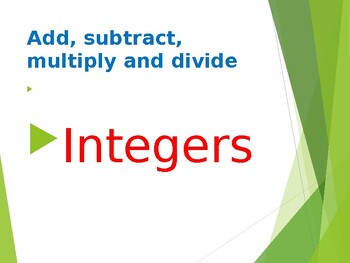
Add, subtract, multiply, divide Integers with real world applications
A complete lesson on integers with real world applications.This lesson examines integers in real life perspectives. It is simplified for a learner of any level.
Subjects:
Grades:
2nd - 12th, Higher Education, Adult Education, Staff
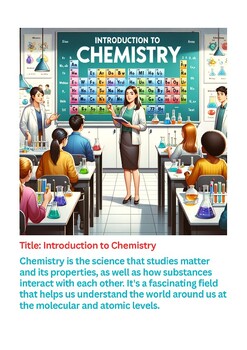
A Short Note on Chemistry For High School Students
Here's a short note on chemistry for high school studentsAll internal contents include:Title: Introduction to ChemistryKey Concepts:MatterElementsAtomsCompoundsChemical ReactionsPeriodic TableChemical BondsAcids and BasesChemical EquationsStoichiometryStates of MatterChemistry in Daily LifeWith beautiful colorful illustrations Total content: 66 pagesCustomer Tips: How to get TPT credit to use on future purchases:Go to your "My Purchases" page. Beside each purchase you will see a "Provide Feedbac
Subjects:
Grades:
9th - 12th, Staff
Types:

Grade 10 Academic Science Chemistry Unit PowerPoints
Contains all the PowerPoints for the entire chemistry unit in SNC2D/ Grade 10 academic science
Subjects:
Grades:
10th - 11th, Staff
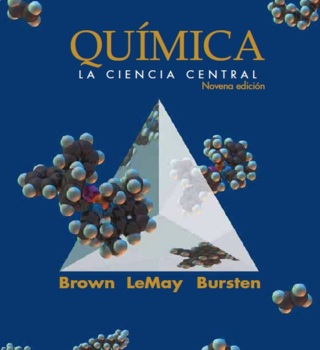
LIBRO QUIMICA LA CIENCIA CENTRAL -SUPER GOOD IN SPANISH
Amigos acá les dejo el Libro original de Química la ciencia Central (Novena edición ) de Pearson. Libro excelente para la enseñanza o aprendizaje de Química fundamental le incluye temas muy interesantes como : Estequimetria, Termodinámica, Estructura de átomos en todas sus expresiones.! Libro muy complejo en todos sus componentes y estructuras. Libro contiene 1155 paginas,25 capitulos, con ejercicios y sus respuestas en sus ultimas paginas. Como testimonio lo e usado con mis estudiantes a nivel
Subjects:
Grades:
6th - 12th, Higher Education, Adult Education, Staff
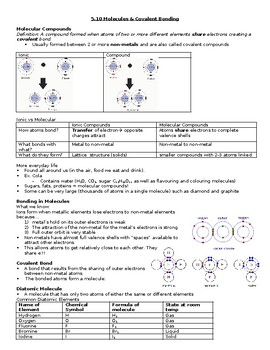
SNC2D Molecules and Covalent Bonding Note
SNC2D Grade 10 Science. Goes along with Nelson Science PerspectivesFollows the followingPowerPointTopics includeMolecular vs. Ionic CompoundsCovalent BondingNaming and Writing Formulas for Molecular CompoundsUsing formulas to draw simple molecular compounds
Subjects:
Grades:
10th - 11th, Higher Education, Adult Education, Staff
Types:
Also included in: SNC2D Chemistry PowerPoints and Notes

SNC2D Writing Chemical Equations and Counting Atoms
SCN2D Grade 10 Academic Science (Aligns with Nelson Science Perspectives 10)Follows the corresponding PowerPointProper formatting for word equations and skeletal equationsconservation of masslearning to count atoms within a compound that includes coefficients and brackets
Subjects:
Grades:
10th - 12th, Higher Education, Adult Education, Staff
Types:
Also included in: SNC2D Chemistry PowerPoints and Notes
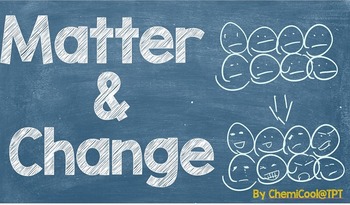
Matter and Change PowerPoint Presentation
1 - Matter and Change PowerPoint Presentation
Topics
Properties of Matter
Physical & Chemical Changes
Mixtures & Substances
Separating
Elements & Compounds
Symbols & Formulas
From ChemiCool
............................................................................................................
Terms of Use
Copyright © ChemiCool. All rights reserved by author. This product is to be used by the original downloader only. Copying for more than one teacher, classroom, departme
Subjects:
Grades:
5th - 12th, Higher Education, Staff

PowerPoint: The Mole (Mole Conversions, Empirical Formula, Percent Composition)
Make teaching easier with this secondary PowerPoint: The Mole (Measuring Matter). Students will learn how to convert elements and compounds between moles, mass, and particles using the concepts of molar mass, the mole, and Avogadro's Number. Students will learn to calculate empirical and molecular formulas, percent composition, and the formula for hydrates. Save hours of time using this complete presentation resource for your secondary science students. Clear, relatable graphics help studen
Subjects:
Grades:
6th - 12th, Higher Education, Adult Education, Staff
Also included in: High School Chemistry Course Growing Bundle
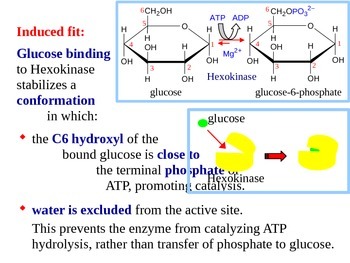
Glycolysis - Biochemistry of Metabolism (Handout / PPT Presentation)
Glycolysis - Biochemistry of Metabolism (Handout / PPT Presentation)
Quick review for students
All the important facts that you need to know compiled in an easy-to-understand PowerPoint presentation.
Subjects:
Grades:
8th - 12th, Higher Education, Adult Education, Staff

SNC2D (Grade 10 Academic) PowerPoints
This includes all the PowerPoints for the entire course
Subjects:
Grades:
10th, Higher Education, Adult Education, Staff
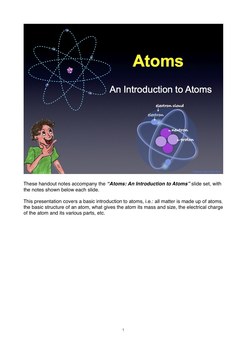
The atom - what are atoms? PDF Notes Handout
This PDF consists of the handout notes to accompany the 31 slide set entitled “Atoms: An Introduction to Atoms”.
A separate 31 slide PowerPoint presentation is available. A separate, free quiz and teachers answers to the quiz are also available for this presentation.
The presentation covers a basic introduction to atoms and includes the following:
• What is the relationship between matter and atoms?
• What is the structure of atoms?
• What is responsible for the atom's mass?
• What is res
Subjects:
Grades:
3rd - 6th, Staff

Solutions and Their Properties (Chemistry)
It is not a secret clear that Topic of Solutions and Their Properties is very important in Chemistry. With the help of this teaching resources you will be able to explain your students what is it Solutions and Their Properties. Solutions and Their Properties teaching resources will suite any teacher/lecturer or tutor who is going or planning to conduct Solutions and Their Properties Lecture or Seminar.LEARNING OBJECTIVES OF THE LECTURE:· Solutions· Energy Changes and the Solution Process· Concen
Subjects:
Grades:
9th - 12th, Higher Education, Adult Education, Staff
Also included in: Chemistry Module Bundle
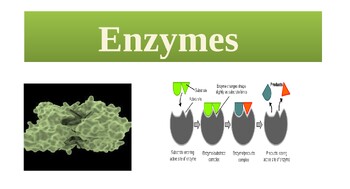
Enzymes Powerpoint Lesson(Editable)
This powerpoint presentation teaches students all about enzymes and how they workCONCEPTS COVERED:1) INTRODUCTION TO ENZYMES: enzymes, enzyme specificity2) ENZYME STRUCTURE: active site, substrate, 3-D conformation, denaturation, coagulation, allosteric site3) ENZYME FUNCTION - INDUCED FIT: lock and key vs. induced fit4) SPEEDING UP CHEMICAL REACTIONS: activation energy, potential energy graph with and without enzymes, how enzymes decrease activation energy5) FACTORS AFFECTING ENZYME ACTIVITY: s
Subjects:
Grades:
6th - 12th, Higher Education, Adult Education, Staff
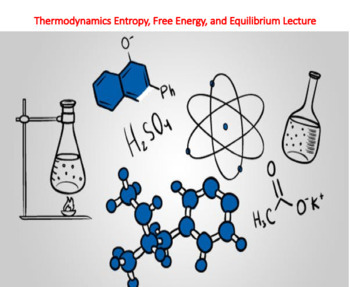
Thermodynamics Entropy, Free Energy, and Equilibrium Lecture (Chemistry)
Thermodynamics Entropy, Free Energy, and Equilibrium Lecturewhat factors determine the direction and extent of a chemical reaction? Some reactions, such as the combustion of hydrocarbon fuels, go almost to comple- tion. Others, such as the combination of gold and oxygen, occur hardly at all. Still others—for example, the industrial synthesis of ammonia from N2 and H2 at 400-500°C—result in an equilibrium mixture that contains appreciable amounts of both reactants and productsIt is not a secret c
Subjects:
Grades:
9th - 12th, Higher Education, Adult Education, Staff
Also included in: Chemistry Module Bundle

Kreb's Cycle Presentation (Handout and PPT Presentation)
Kreb's Cycle Presenation (Handout and PPT Presentation)
Quick review for students
All the important facts that you need to know compiled in an easy-to-understand PowerPoint presentation.
Subjects:
Grades:
8th - 12th, Higher Education, Adult Education, Staff
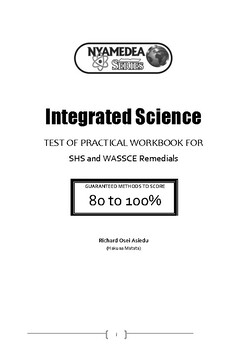
CHEMISTRY TEST OF PRACTICAL WORKBOOK
Best resource for students preparing to write their exams.
Subjects:
Grades:
11th - 12th, Higher Education, Staff
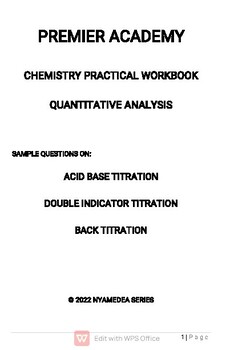
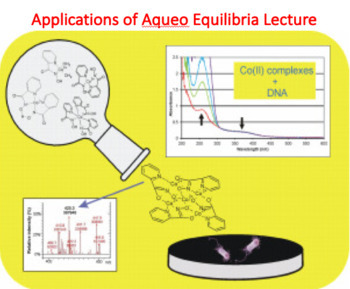
Applications of Aqueo Equilibria Lecture (Chemistry)
Applications of Aqueo Equilibria LectureAqueous equilibria play a crucial role in many environmental and biological processes. For example, the pH of many lakes and streams must remain near 5.5 for plant and aquatic life to flourish. The pH of human blood is carefully controlled at a value of 7.4 by equilibria involving primarily the conjugate acid–base pair H2CO3 and HCO3 - . At lower pH values, the affinity of hemoglobin in red blood cells for O2 molecules decreases and the blood carries less
Subjects:
Grades:
8th - 12th, Higher Education, Adult Education, Staff
Also included in: Chemistry Module Bundle

Balancing and Identifying Chemical Reactions
The following document includes theory and background on balancing chemical equations, and identifying basic types of reactions.
The basic types of reactions include:
- Single-replacement
- Double-replacement
- Combination
- Decomposition
- Combustion
The document also includes 25+ examples of balancing and identifying chemical equations
Balancing and Identifying Chemical Reactions by Adnan Brkovic is licensed under a Creative Commons Attribution 4.0 International License.
Subjects:
Grades:
10th - 12th, Higher Education, Adult Education, Staff
CCSS:
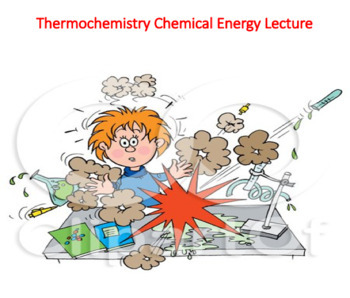
Thermochemistry Chemical Energy Lecture (Chemistry)
Thermochemistry Chemical Energy LectureWhy do chemical reactions occur? Stated simply, the answer involves stability. For a reaction to take place spontaneously, the final products of the reaction must be more stable than the starting reactants. But what is “stability,” and what does it mean to say that one substance is more stable than another? The key factor in determining the stability of a substance is energy. Less stable substances have higher energy and are generally converted into more st
Subjects:
Grades:
9th - 12th, Higher Education, Adult Education, Staff
Also included in: Chemistry Module Bundle

Mass Relationships in Chemical Reactions Lecture (Chemistry)
Mass Relationships in Chemical Reactions LectureMass relationship between reactants and products can be used to calculate how much carbon dioxide is released when gasoline or other carbon-containing fuels are burned. It’s important to realize that chemical reactions—the change of one substance into another—are at the heart of the science. Nearly every process that occurs in your body, including vision, the sensation of pain, and the conversion of food to energy, is in essence a series of chemica
Subjects:
Grades:
8th - 12th, Higher Education, Adult Education, Staff
Types:
Also included in: Chemistry Module Bundle
Showing 1-24 of 79 results


